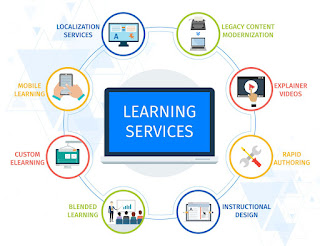7 Ways to Build Accessible Mobile eLearning Module For Learn
No doubt, technology has evolved to the next level, making eLearning possible for all learners. However, still, there is a handful of them who are uncomfortable in accessing digital solutions. Which tops the table? They are mobile eLearning applications. Now, the question is everyone comfortable in accessing it, or will it create a digital divide.
So, what is
the solution to rectify this problem? It is the accessibility. Over the years,
learning institutions have tried to meet global accessibility standards like
WCAG, Section 508, and others. Want facts? Almost 51% of global internet users
access eLearning solutions on their smartphones. Hence, how to build accessible
mobile learning solutions? Read on.
How to Build Accessible
Mobile Elearning Plan
In 2020,
almost 74% of learners used to access eLearning resources through mobiles.
Thus, developing accessible solutions is the need of the hour. Find out how to
build an accessible plan.
1.
Use
Artificial Intelligence (AI)
AI helps
disabled learners to step into an advanced world and technology to understand
their difficulties. It improves the accessibility of the digital solution. So,
why not leverage this technology in mobile learning applications? Make learning
more straightforward and accessible through AI. Speech recognition software is
the best AI tool that elevates the learning experience.
2.
Go
with microlearning
What say
about bite-sized modules? The excellent fact about them is, these modules are
easy to complete within minutes. How? Every lesson is focused on a single
concept. What about accessibility? Well, learners can access these engaging
modules anytime and anywhere.
Several
researches show these solutions on mobile applications are engaging and easily
help learners in recalling the content. What’s more? Convenient and useful
learning and even research show 64% of learners start researching on mobile
itself.
3.
Mobile
LMS
A mobile
learning LMS is an effective tool to manage and administer mobile training
content. Does not it sound good that implementing accurate training modules
more quickly? Navigating through modules becomes easier! And what for clients?
One mobile
LMS is sufficient for an organization to manage mobile eLearning
content online. Is anything missing? Yes, make a multilingual mobile LMS that
allows remote learners to connect with your company’s training program.
4.
Videos
An
interactive, engaging, and informative videos are a crisp and condensed form of
information. What a textbook conveys in one hour, video conveys the same
concept within minutes. The fact that makes it more special is, recalling
concepts is 9% easier than textual content.
More facts?
93% of organizations believe that the use of educational videos improves the
learning experience. In addition, many disabled learners have problems with
textual content. Hence, video learning will fill the learning gap in such
cases.
5.
Build
For Scrolling
Good that
videos and microlearning solutions are included in mobile eLearning.
But why split up the content into lots of screens? More splitting equals more
scrolling. On average, a learner scroll between 201.48 and 257.75 times per
day. So, how to minimize the scrolling time of content?
Make more
accessible formats with fewer clicks required. Use headers and footers to
describe each section. And the final point, make every points visible so that
learners will not have to waste time zoom in and zoom out the page.
6.
Engaging
elements
Responsive
design and engaging eLearning elements like clickable hotspots, quizzes, and
interactive exercises elevate the learning accessibility. Try to make as much
engaging as possible or collaborate with a mobile eLearning
company. Why so?
Professional
L&D experts curate high-quality and compelling mobile learning
solutions. So, the results are that more learners associate themselves
with the course and opt for clients to receive higher ROI.
7.
Captioning
and colour coding
Colour and
texts are the backbones of any accessible solution. So, why not integrate them
into mobile learning applications? Captions give descriptions of on-screen
elements, and colour grabs the attention of viewers. To comply with WCAG 2.1 AA guidelines, the
text needs to have at least a 4.5:1 colour contrast ratio.
Any
benefits of description? A study shows 82% of their respondent's used screen
readers, and captions helped them understand the content. Any apps lacking
these features are not user-friendly. Hence, clients must keep these two
factors in mind while designing the mobile learning application.




Comments
Post a Comment